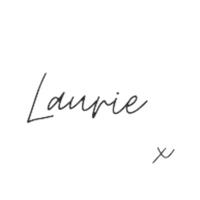A traditional Shetland Christmas past - Gӧd Yule
Shetland Crofthouse Museum under a dusting of festive snow
Christmas in Shetland is something I’m asked about time and time again. What does Christmas in Shetland look like? What traditions do you have? What do you eat, and so on. And, to be honest – it looks a lot like Christmas all over the world, and certainly throughout the UK. We have the John Lewis advert, Wham, Buble and the great hunking turkey on the day.
We’ve lost so many of our Christmas traditions over the years, and I’ve sat agonising over how to sugar coat this and make it sound less like an accusation or something that blame can be assigned to. The truth is, it’s modernisation, and it happens the world over. Small island communities may feel it more acutely because so many of our traditions are still bound up within living memory – or are still practised by some. Change comes nonetheless, and there’s no stopping it.
But, for this blog, I’ll look back at some of the Christmas traditions of past Shetland – and a few that have managed to hang on into the present day.
Christmas in Shetland looked very different in the past – we even held it on a different date. Known as Yule, it was a time of celebration and tradition stemming from pagan rituals and beliefs.
The celebrations of Yule began at midwinter and lasted for 24 days. The outside work was on hold at this time as it was too dark to get on with much, and the boats were hauled up high in the noosts. It was a time to get together, to catch up with friends and neighbours, and it was the season that most weddings were held. Throughout the 24 days of Yule, a dance was held every evening in someone’s barn somewhere in the community, bringing people together during an otherwise dark and unforgiving season.
Low midwinter sun in Shetland
Winter, in general, was a time of coming together for Shetlanders. The hard work of the previous seasons was on hold as darkness returned and the land lay fallow. During this time, families and friends got together to pass evenings spinning, knitting, making fishing lines, and sharing stories.
The origins of Yule are thought to come from Viking and Norse times when the festival of Jul was celebrated at midwinter. Many ‘special days’ are attributed to Yule, including Tul-yas-e’en, Helya’s Night, Tammasmas E’en, Byana’s Sunday & Yule E’en, each bringing its own rituals and observances.
Yule was characterised by music, dancing, food, friendship and a good helping of superstition. The fiddle was the instrument of choice and Shetlanders were very good at playing it (an estimated one in 10 people could play in the early 19th century). This was the main form of entertainment without television or radio, and the Shetland reel was one of the most popular dances.
Meat has always been a big part of Yule (and Christmas) celebrations, where today we tend to celebrate with the masses and enjoy turkey; in the past, the best hog [castrated male sheep] was slaughtered for the occasion.
Poet Vagaland describes this process in his poem Yӧle Day Ida Yardwhere he says:
Superstition played a prominent role in the celebrations of Yule and, on Tul-yas-e’en (one week before Yule), trows were thought to be at their most active. Trows are hill-people who live in underground houses and can only venture out among people in the dark, and in the depths of winter, their power is at its greatest. They were mischievous, loved fiddle music, deplored disorder in the home, and were often blamed for unexplained infant death. To keep trows at bay, people would leave two pieces of straw, in the shape of a cross, by the door and walk through the house brandishing a burning peat.
On Yule morning, the head of the house would light a candle in the eye socket of a cow’s skull (that had been prepared and eaten on Byana’s Sunday) and walk to the byre carrying it as he went to feed the animals. After this, he would offer everyone in the house a dram and offer up the following verse:
Yule Gude and Yule Gear
Follow de trow da year.
Rituals like these were part and parcel of Yuletide celebrations across Shetland.
After the Yule dinner, families, friends and neighbours would gather outside and play ba’ – a form of football but seemingly without rules – using a ball made from a pig’s bladder. Playing ba’ was a feature of Yule celebrations until the early 20th century in Shetland. Orkney today still plays a traditional ball game at Christmas, but this has been lost to history in Shetland
With the spread of Christianity, changes to Yule celebrations meant that many of the traditions and rituals were dismissed – although good company, good friends and good food have remained at the heart of what Christmas means to people in Shetland.
But that’s not the end of the story of Christmas in Shetland, and I already mentioned that we used to celebrate it on a different day. In the 16th century, Pope Gregory introduced the Gregorian Calendar to bring the calendar year back in line with solar equinoxes. As a result, the calendar dates all shifted, bringing Christmas (or Yule) forward 10 days.
Shetland was slow to adopt these changes, and Christmas and New Year were still held on the old dates (5th January and 12th January). This remained the case for several years, and as the rest of the world moved into the Gregorian calendar, Shetland continued to follow the old Julian model.
Today, the island of Foula, Shetland’s most westerly outpost, still celebrates Christmas and New Year according to the old calendar. And, to add another layer of confusion, Foula held their celebrations on the 6th and 13th – probably because they adopted the new calendar on the leap year of 1800, creating an extra day.
So, as you tuck into your Christmas dinner, remember that for some in Shetland, Christmas has yet to come!







